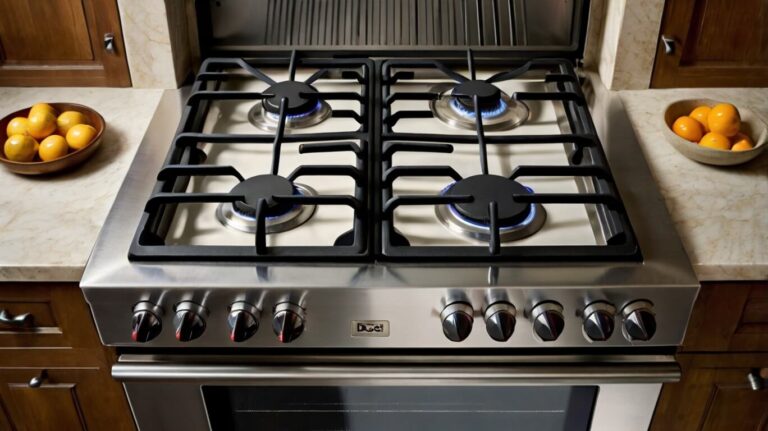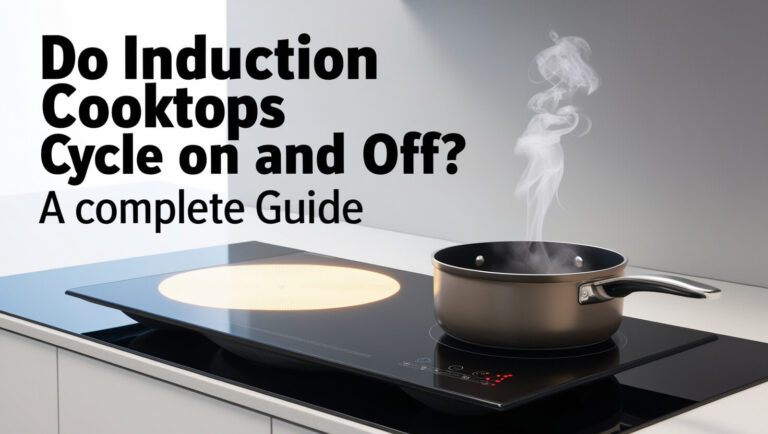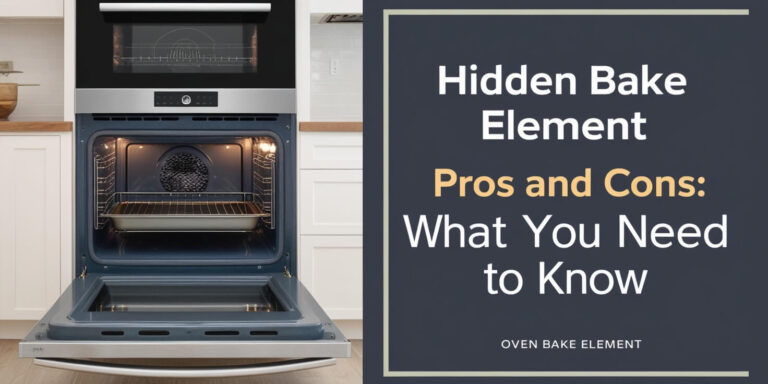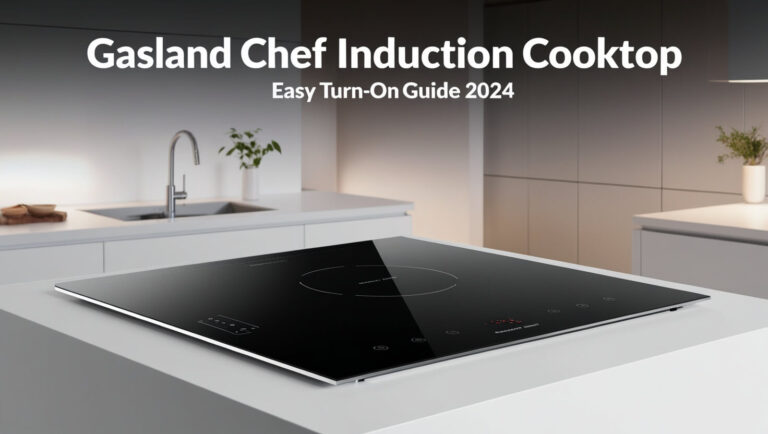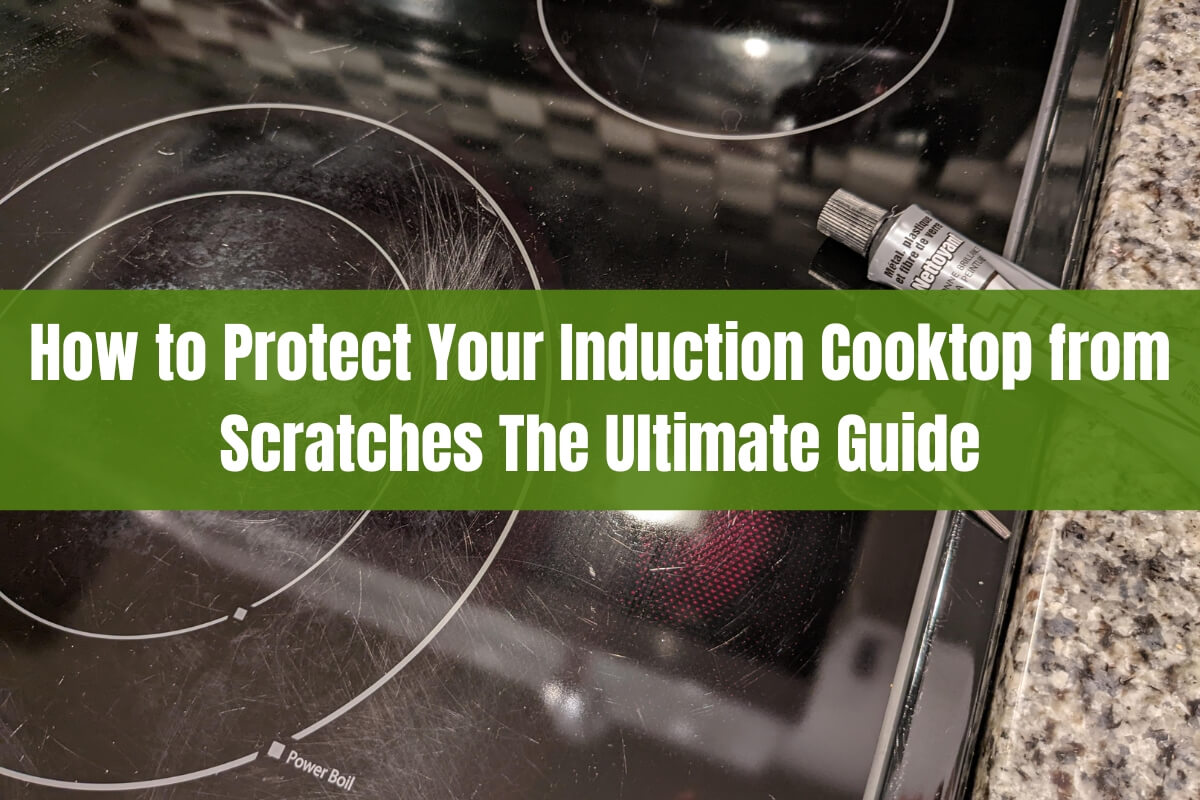
Induction cooktops are a popular choice for modern kitchens. They offer precise temperature control, energy efficiency, and a sleek, easy-to-clean surface. However, that smooth glass surface is also susceptible to scratches, which can not only mar the appearance but potentially impact performance over time.
So, how do you protect your induction cooktop from scratches?
The key is to use proper cookware, handle it with care, clean safely, and utilize protective mats or covers when needed. With some simple precautions, you can keep your induction cooktop looking great for years.
In this comprehensive guide, we’ll cover everything you need to know about protecting your induction cooktop, including common causes of scratches, safe cleaning methods, scratch removal techniques, and the best ways to safeguard the surface when not in use.
What is an Induction Cooktop?
Before we dive into protection tips, let’s quickly review how induction cooktops work. Unlike traditional electric or gas cooktops, induction models use electromagnetic fields to directly heat the cookware, rather than heating the surface itself.
The cooktop contains an electromagnetic coil that creates a magnetic field when activated. When you place a ferromagnetic pot or pan (made of cast iron or magnetic stainless steel) on the surface, the magnetic field induces an electrical current in the cookware, causing it to heat up rapidly and efficiently.
While the cooktop surface may get warm from contact with the heated cookware, it doesn’t produce any direct heat. This not only makes induction cooking incredibly energy-efficient but also allows for a smooth, easy-to-clean glass-ceramic surface without any exposed heating elements.
Why is it Important to Prevent Scratches on Induction Cooktops?
Scratches on an induction cooktop may seem like a mere cosmetic issue, but they can actually impact both the appearance and performance of your appliance over time.
Firstly, scratches can detract from the sleek, modern look of your cooktop, especially if they’re deep or widespread. Even minor scratches can affect the smooth, glossy finish, making the surface appear dull or etched.
More importantly, deep scratches or cracks in the cooktop’s surface can potentially cause damage or malfunction. The glass-ceramic material is designed to withstand high temperatures, but cracks or chips can allow moisture or debris to seep in, interfering with the electromagnetic field or causing short circuits.
In extreme cases, a severely scratched or cracked cooktop may need to be replaced entirely, which can be costly and inconvenient. Therefore, it’s crucial to take preventive measures and properly care for your induction cooktop to avoid such issues.
Common Causes of Scratches on Induction Cooktops
To effectively protect your induction cooktop, it’s helpful to understand the most common causes of scratches. Here are some of the main culprits:
- Dragging or sliding cookware across the surface: While the cooktop itself doesn’t get as hot as traditional electric or gas models, the cookware can still reach high temperatures. Sliding a hot pan across the glass surface can easily scratch or etch the material.
- Using rough-bottomed or cast iron cookware: Cast iron skillets and some types of stainless steel cookware may have rough or uneven bottoms that can scratch the cooktop’s smooth surface, especially when dragged or dropped.
- Dropping utensils or heavy objects: Dropping utensils, cookware, or other heavy objects onto the cooktop can cause dents, cracks, or deep scratches in the glass-ceramic surface.
- Spills that get baked on: Spills or splatters that aren’t cleaned promptly can bake onto the cooktop’s surface, requiring scraping or abrasive cleaning methods that may lead to scratches.
- Improper cleaning techniques: Using abrasive scouring pads, harsh chemicals, or scraping tools incorrectly can scratch or etch the cooktop’s delicate surface.
By understanding these common causes, you can take the necessary precautions to prevent scratches and keep your induction cooktop in top condition.
How to Prevent Scratches While Cooking
One of the most effective ways to protect your induction cooktop is to adopt proper cooking habits and use the right cookware. Here are some tips to keep in mind:
Use Smooth-Bottomed Cookware
The best cookware for induction cooktops is made from magnetic stainless steel or enameled cast iron, with smooth, flat bottoms. These surfaces are less likely to scratch or etch the cooktop’s glass surface.
Avoid using rough-bottomed or uncoated cast iron skillets directly on the cooktop, as the rough texture can easily cause scratches, especially if the cookware is dragged or dropped.
Handle Cookware with Care
Always lift pots and pans straight up and set them down gently on the cooktop surface. Avoid dragging or sliding cookware across the glass, even if it’s just a short distance.
Use oven mitts or pot holders to ensure a secure grip, and be extra careful when handling hot cookware to prevent accidental drops or slips.
Use Protective Mats or Trivets
To create a barrier between your cookware and the cooktop surface, consider using silicone baking mats, parchment paper, or specialized induction cooktop mats. These materials can help prevent direct contact and scratches, especially if you’re using rougher cookware like cast iron.
However, it’s important to note that some mats or trivets may not be suitable for high temperatures or may affect the induction process. Check the manufacturer’s recommendations and choose products specifically designed for use with induction cooktops.
Clean Up Spills Immediately
Spills or splatters on the cooktop’s surface can quickly bake on and become difficult to remove, potentially leading to scratches during the cleaning process. Always clean up any spills or splatters as soon as they occur, once the cooktop has cooled down enough to safely wipe it clean.
Using a soft, damp cloth or paper towel, gently wipe away any messes before they have a chance to dry and harden on the surface.
Can You Use Cast Iron on Induction Cooktops?
Cast iron cookware is beloved for its durability, heat retention, and versatility. However, many people wonder if it’s safe to use cast iron pots and pans on an induction cooktop, given their rough surfaces and potential for scratching.
The good news is that you can indeed use cast iron on induction cooktops, but you’ll need to take some extra precautions to protect the glass surface.
Firstly, it’s essential to properly season your cast iron cookware to create a smooth, non-stick surface. A well-seasoned cast iron pan will have a relatively smooth bottom that’s less likely to scratch the cooktop.
Secondly, always handle your cast iron cookware with care. Lift and set it down gently, avoiding any dragging or sliding motions that could cause scratches.
If you’re particularly concerned about scratching, consider using enameled cast iron cookware instead. The enamel coating provides a smooth, non-scratch surface while still offering the benefits of cast iron cooking.
Alternatively, you can place a protective barrier, such as a silicone baking mat or parchment paper, between the cast iron and the cooktop to prevent direct contact.
Cleaning Your Induction Cooktop Safely
Proper cleaning is essential for maintaining the appearance and performance of your induction cooktop. However, it’s crucial to use the right techniques and products to avoid scratching or damaging the delicate glass surface.
Wait for the Cooktop to Cool
Always allow your induction cooktop to cool down completely before cleaning. Trying to clean a hot surface can lead to burns or damage, and some cleaning products may react poorly to high temperatures.
Use Approved Cleaners
Opt for cleaners specifically designed for ceramic or glass cooktops. These products are formulated to be gentle yet effective, helping to cut through grease and baked-on messes without scratching or etching the surface.
Alternatively, you can use a mild solution of warm water and white vinegar, which is a safe and natural cleaning option for induction cooktops.
Avoid Abrasive Materials
Steer clear of abrasive scouring pads, steel wool, or harsh chemicals like bleach or oven cleaners, as these can easily scratch or damage the cooktop’s surface. Instead, use soft cloths, sponges, or non-abrasive scrubbing pads specifically designed for glass or ceramic surfaces.
Clean Up Spills Promptly
As mentioned earlier, it’s essential to clean up any spills or splatters as soon as possible, once the cooktop has cooled down enough to safely wipe it clean. Leaving messes to bake on will only make them harder to remove and increase the risk of scratching the surface during the cleaning process.
Removing Light Scratches from Induction Cooktops
Despite your best efforts, your induction cooktop may still develop light scratches over time. Fortunately, there are some safe and effective methods you can use to help minimize their appearance.
Use a Baking Soda Paste
A simple paste made from baking soda and water can be an excellent gentle abrasive for polishing out fine scratches on your cooktop’s surface. Simply mix a few tablespoons of baking soda with enough water to form a thick paste, then gently rub it onto the scratched area using a soft, damp cloth or non-abrasive sponge.
Rinse the area thoroughly with clean water and buff dry with a microfiber cloth to reveal a smoother, less noticeable scratch.
Try Specialized Scratch Removal Products
Several specialized scratch removal products are designed specifically for glass and ceramic cooktops. These often contain mild abrasives, like cerium oxide, that can help buff out light scratches without damaging the surface.
Follow the product instructions carefully, and always test a small, inconspicuous area first to ensure the product doesn’t cause any unintended damage or discoloration.
Buff with a Non-Abrasive Cleaning Powder
Non-abrasive cleaning powders, such as those formulated for stainless steel or ceramic surfaces, can also help fill in and minimize the appearance of light scratches on your induction cooktop.
Sprinkle a small amount of powder onto the scratched area and buff gently with a soft, damp cloth using circular motions. Rinse thoroughly and buff dry to reveal a smoother surface.
Remember, these methods are best for minor, surface-level scratches. Deeper scratches or cracks may require professional repair or replacement of the cooktop surface.
Protecting the Cooktop When Not in Use
Preventing scratches isn’t just about being careful during cooking – it’s also important to protect your induction cooktop when it’s not in use. Here are a few tips:
Use Cooktop Covers or Silicone Mats
Invest in a cooktop cover or silicone mat designed specifically for induction surfaces. These protective barriers can shield the cooktop from scratches, spills, and other potential damage when the appliance is not in use.
Cooktop covers are typically made from durable materials like tempered glass or sturdy plastic, while silicone mats offer a flexible, heat-resistant option.
Avoid Placing Heavy Objects on the Surface
While your induction cooktop’s surface is designed to withstand the weight of cookware, it’s best to avoid placing heavy objects directly on the glass when it’s not in use. This can increase the risk of scratches, dents, or even cracks in the surface.
Don’t Use the Cooktop as a Cutting Board
It may be tempting to use your smooth cooktop surface as a makeshift cutting board, but this is a surefire way to introduce deep scratches and damage. Always use a dedicated cutting board or prep surface for slicing, chopping, or dicing ingredients.
Induction Cooktop Dos and Don’ts
To summarize the best practices for protecting your induction cooktop, here’s a handy list of dos and don’ts:
Do:
- Use smooth, flat-bottomed cookware
- Lift and gently set down pots and pans
- Clean up spills immediately after cooling
- Use approved cooktop cleaners and soft cloths
- Cover the cooktop when not in use
Don’t:
- Drag or slide cookware across the surface
- Use abrasive scouring pads or harsh chemicals
- Place heavy objects directly on the cooktop
- Cut or chop ingredients on the cooktop surface
- Leave baked-on messes to harden
Conclusion
Protecting your induction cooktop from scratches is all about adopting the right habits and using the proper tools and techniques. By following the tips outlined in this guide – such as using smooth cookware, handling it with care, cleaning safely, and utilizing protective barriers – you can keep your cooktop looking pristine and extend its lifespan.
Remember, prevention is key. Taking proactive measures to avoid scratches in the first place is far easier than trying to repair or conceal damage after the fact. With a little mindfulness and the right approach, you can enjoy the beauty and efficiency of your induction cooktop for years to come.

